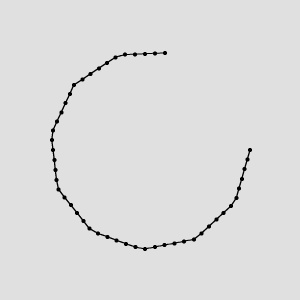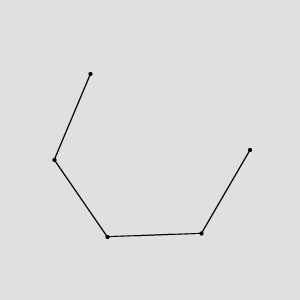You are here: Start » Filter Reference » Path Global Transforms » ConvertToEquidistantPath
Creates a new path whose characteristic points lie on the input path, but are equally spaced.
| Name | Type | Range | Description | |
|---|---|---|---|---|
 |
inPath | Path | Input path | |
 |
inStep | Real | 0.0 -  |
Requested distance between consecutive points |
 |
inEquidistanceType | EquidistanceType | Defines how the distance is measured | |
 |
outPath | Path | Output path | |
Description
The operation follows a path from its beginning to the end, reselecting its characteristic points every inStep pixels. Note that this operation can significantly change the shape of a path, especially when the inStep value is relatively big.
To reduce the number of points in a path preserving its shape, one can use ReducePath filter.
Examples
 |
 |
ConvertToEquidistantPath run on the sample path with inStep = 10 and inEquidistanceType = OutputPathEquidistance.
 |
 |
ConvertToEquidistantPath run on the sample path with inStep = 100 and inEquidistanceType = OutputPathEquidistance.
Errors
This filter can throw an exception to report error. Read how to deal with errors here: Error Handling
| Error type | Description |
|---|---|
| DomainError | inStep has to be positive in ConvertToEquidistantPath. |
Complexity Level
This filter is available on Basic Complexity Level.



